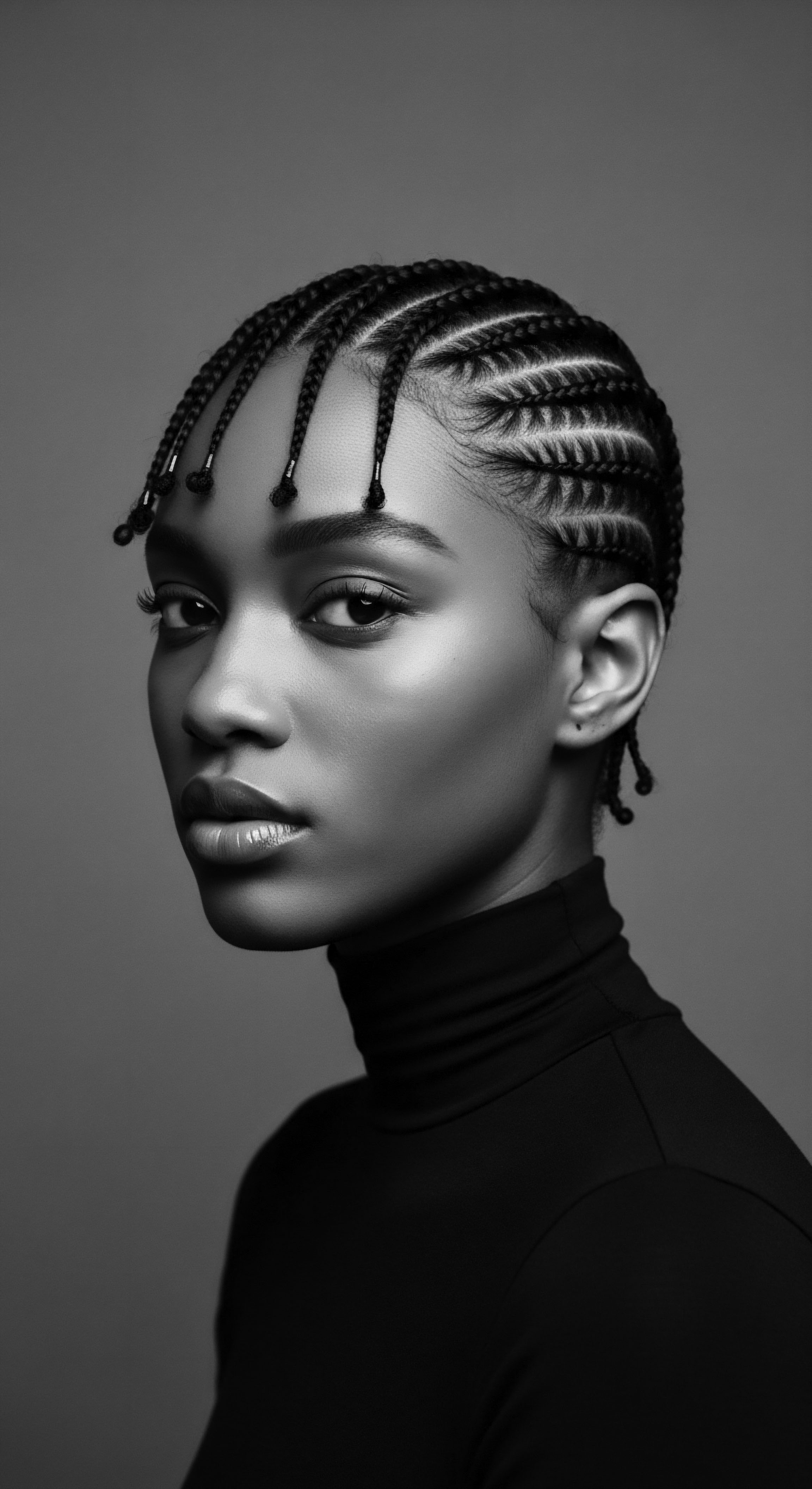
Roots
To journey back to ancient Egypt is to step into a realm where the strands that crown our heads held meaning far beyond adornment. It is a time when the care of textured hair was not simply a mundane ritual, but a deeply interwoven practice reflecting social standing, spiritual connection, and a profound respect for personal well-being. For those of us with coils and kinks that sing tales of diverse lineages, understanding what ancestral practices shaped ancient Egyptian textured hair care becomes a resonant act of reclamation. We seek not merely historical facts, but an echo from the source, a whispered wisdom across millennia that speaks to our own textured hair heritage.

What Insights Does Ancient Hair Anatomy Unveil?
The very structure of textured hair, with its elliptical cross-section and unique curl pattern, provides distinct considerations for care. While modern science offers precise classifications for hair types, the ancient Egyptians, through keen observation and practical engagement, understood these inherent qualities. Their practices were tailored to hair that often possessed a natural tendency towards dryness due to its coiled structure, which inhibits the easy descent of natural oils from the scalp along the hair shaft. They recognized the need for protective measures against the desert climate and the value of moisture to maintain hair’s suppleness.
Archaeological findings, such as preserved wigs and mummified hair, reveal an array of natural hair types among ancient Egyptians, from very curly black hair to middle brown straight strands. This biological variation within the population points to diverse heritage. The ingenuity of their solutions suggests a practical understanding of how to manage and preserve different textures. They didn’t classify hair in a numerical system as we do today, but their actions, their choice of tools and preparations, demonstrate a sophisticated, intuitive grasp of hair’s elemental needs.
Ancient Egyptian hair care practices offer a profound connection to the historical needs and symbolic meanings of textured hair.
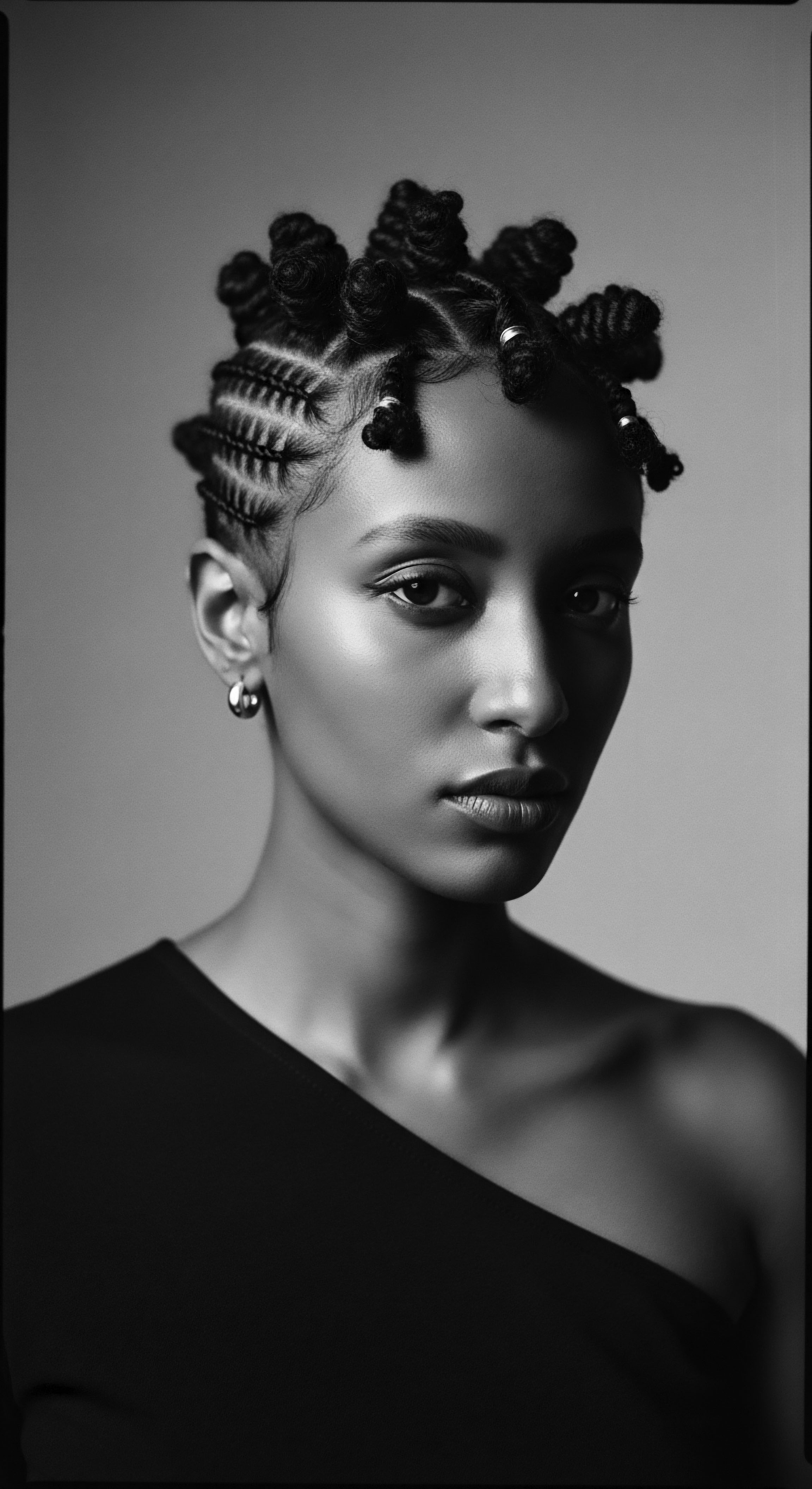
How Did Ancient Tools Reflect Textured Hair Needs?
The tools used in ancient Egypt speak volumes about the hands that crafted and used them, and the hair they were made to tend.
- Combs ❉ The oldest known comb, dating back over 6000 years, was found in ancient Kemet (Egypt). These early combs, often made of wood and animal bones, possessed wider spaces between their teeth than many contemporary European combs, a design feature that resonates with the requirements of textured hair, which benefits from tools that minimize breakage. Ethnographic studies indicate that such combs were not only for detangling but also served as status symbols and decorative pieces worn within the hair.
- Razors and Tweezers ❉ Both men and women engaged in hair removal for hygiene and aesthetic reasons, using instruments that served as razors and tweezers. Priests, for instance, often shaved their heads to maintain ritual purity.
- Styling Tools ❉ While direct evidence of curling irons in the modern sense is scarce, some artifacts of uncertain function suggest their use in creating specific waves and curls, perhaps mimicking the natural inclinations of some hair textures or imparting a desired style.
| Tool Type Wide-Tooth Combs |
| Ancient Egyptian Purpose Detangling, styling, adornment, status symbol |
| Connection to Textured Hair Heritage Design suited for detangling coily hair, a practice seen in many African hair traditions. |
| Tool Type Razors/Tweezers |
| Ancient Egyptian Purpose Hygiene, ritual purity, aesthetic hair removal |
| Connection to Textured Hair Heritage Emphasis on cleanliness and deliberate grooming as a foundation for hair care. |
| Tool Type Styling Implements (Implied) |
| Ancient Egyptian Purpose Creating waves, plaits, securing styles |
| Connection to Textured Hair Heritage Early methods for shaping and maintaining elaborate styles, including those found on textured strands. |
| Tool Type These tools illustrate a practical and symbolic understanding of hair management within a rich cultural context. |
These implements were not simply functional objects; they were extensions of a beauty philosophy deeply tied to the social and spiritual fabric of ancient Egyptian life. Their design, particularly the combs, shows a practical understanding of various hair qualities, aligning with needs often seen in textured hair today.
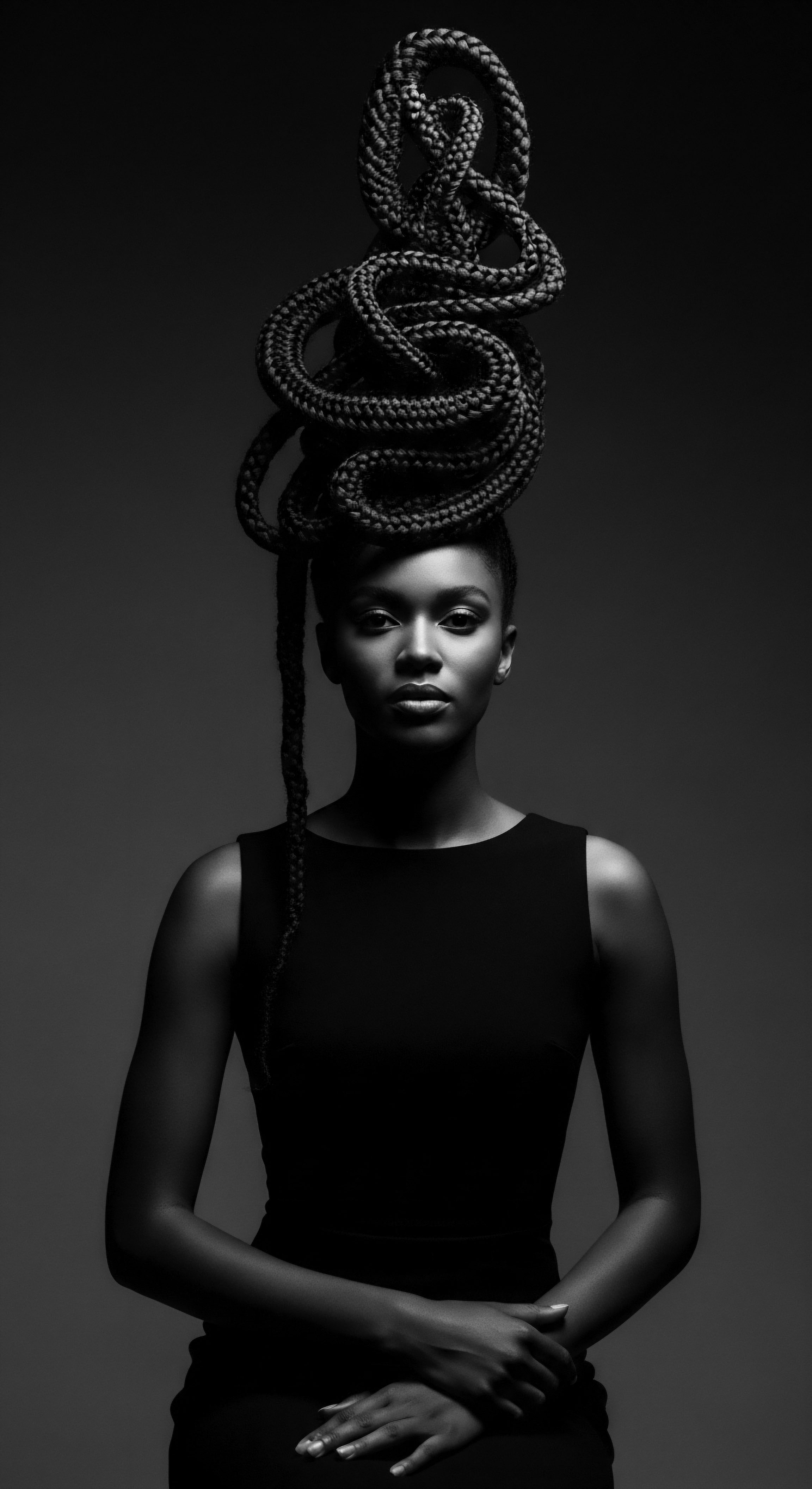
Ritual
The practices that shaped ancient Egyptian textured hair care extended far beyond simple grooming; they were a complex set of rituals reflecting status, identity, and a reverence for the self that transcended the living realm. The artistry with which ancient Egyptians approached their hair, whether natural or adorned, speaks to a heritage of meticulous attention and symbolic meaning. These were not casual acts but deliberate ceremonies of beautification and spiritual alignment.
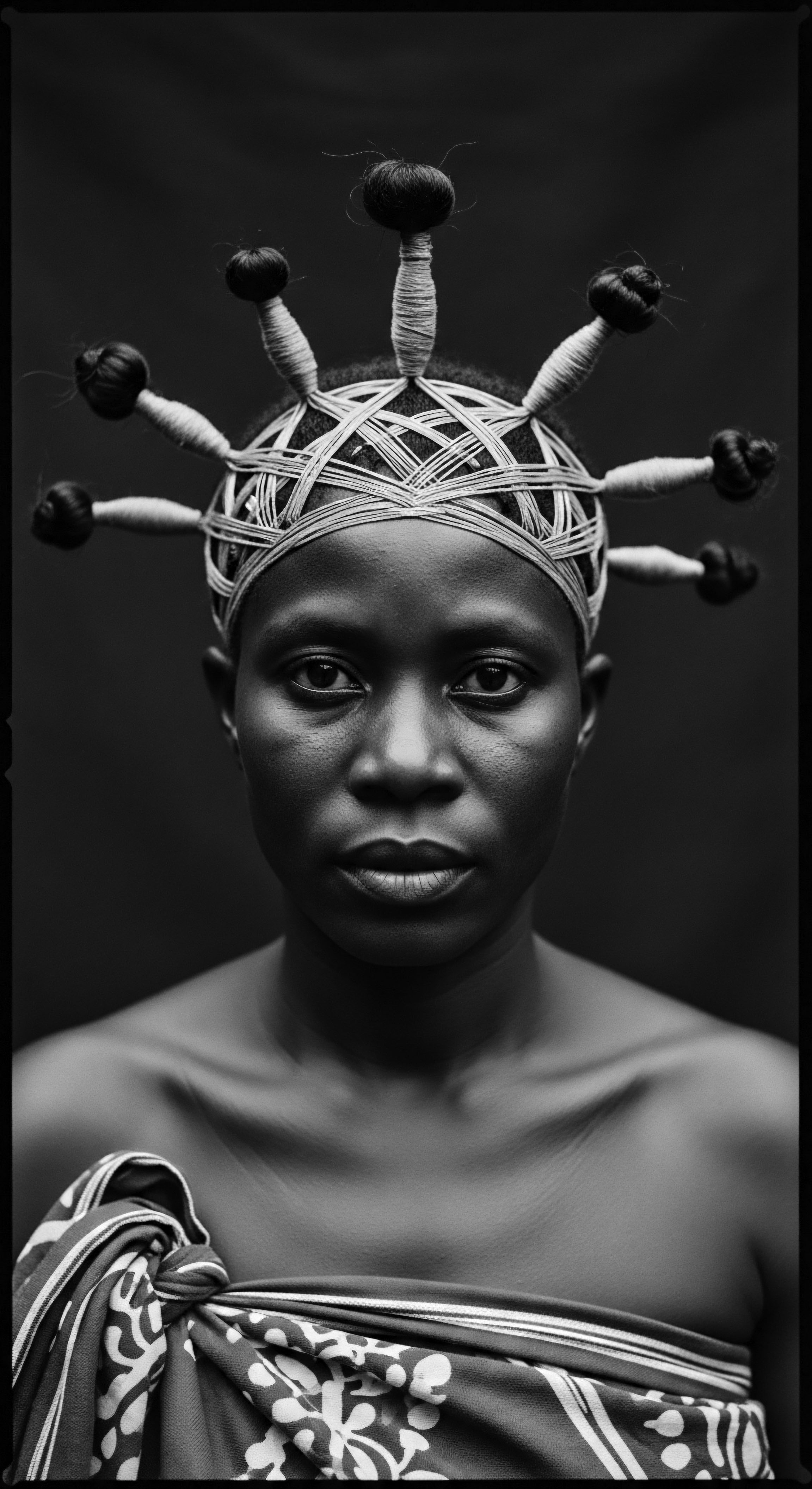
Were Wigs and Extensions a Symbol of Status?
Wigs and hair extensions stood as powerful visual statements in ancient Egypt, adopted by both men and women across various social stratifications. As early as 3400 BCE, evidence points to the use of wigs made from human hair, plant fibers, or even sheep’s wool, often held in place with beeswax or resin. These elaborate hairpieces offered solutions for hygiene, protecting the scalp from the intense desert sun and providing a shield against lice, a persistent ancient pest.
Beyond practicality, wigs acted as undeniable markers of wealth and position. The more intricate and voluminous the wig, sometimes decorated with gold, beads, or jewels, the higher the wearer’s standing.
The emphasis on thick, full hair was pervasive. For those who could not afford luxurious wigs, hair extensions served a similar purpose, adding body and length to natural hair. One remarkable discovery revealed a woman from Amarna with 70 hair extensions, some made of gray and dark black hair, suggesting contributions from multiple individuals to create these striking additions. This highlights a community aspect to hair care, where collective efforts contributed to individual expression and group identity, a resonance with communal styling practices within Black and mixed-race cultures today.
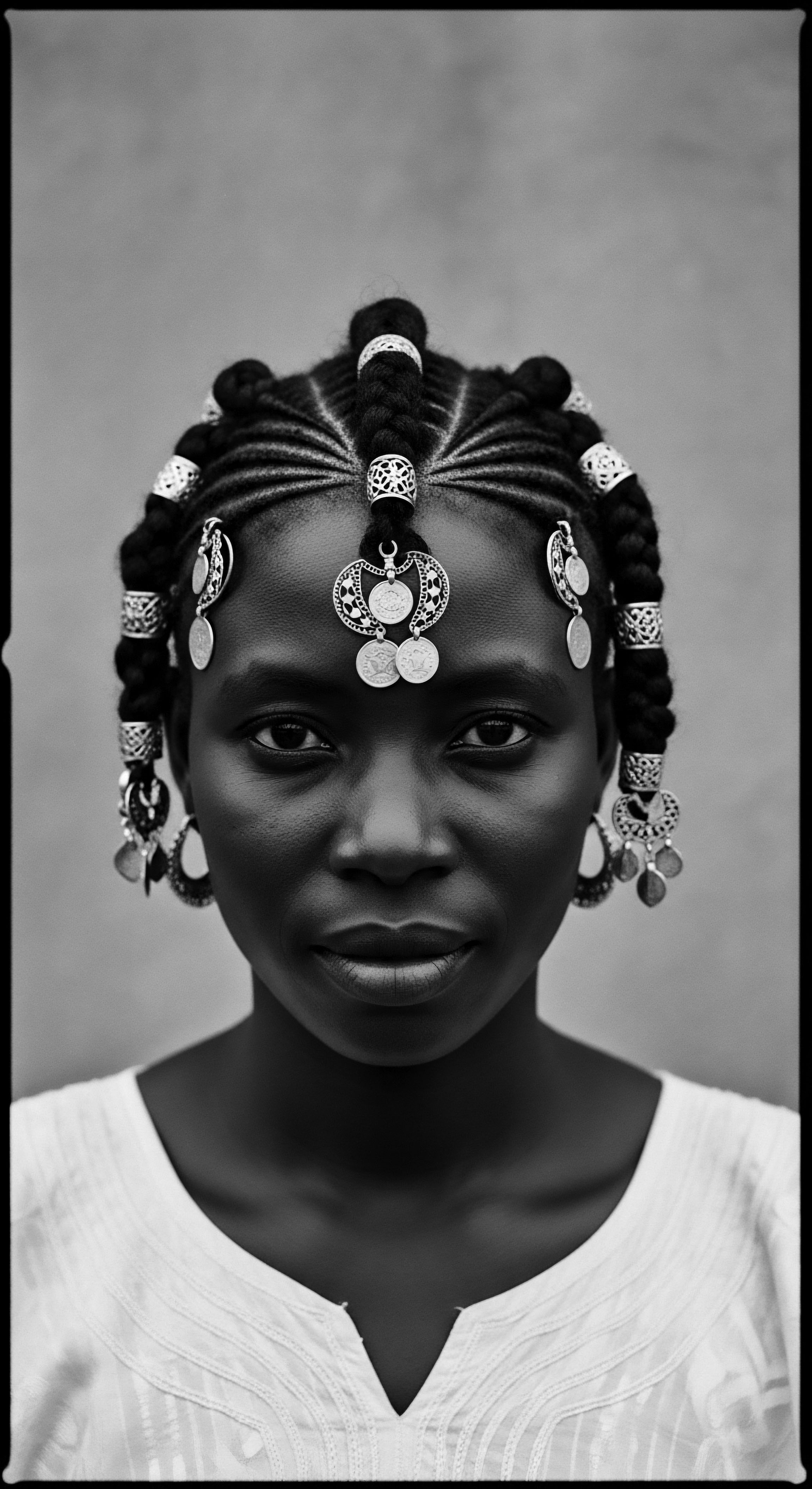
How Did Braiding Practices Convey Identity?
Braiding, plaiting, and coiling were central to ancient Egyptian hair styling, a tradition with roots across Africa that predates even dynastic Egypt. Archaeological evidence, like a rock painting from 3500 BCE in the Sahara, depicts a woman with cornrows, establishing their deep historical presence. In Egypt, women often wore their hair in multiple narrow plaits, twists, or crimped tresses, styles that could denote age, marital status, and social class. The “sidelock of youth,” a single braid worn by children, symbolized their age and connection to the god Horus.
Specific braided patterns were not merely decorative. They carried significant cultural and spiritual meaning, sometimes believed to offer protection against malevolent forces. The tripartite style, where three sections of hair were arranged, even mirrored the regenerative powers of the god Osiris, showcasing the spiritual connection embedded in hair adornment. This interplay between personal style and cosmological belief demonstrates a sophisticated understanding of hair as a living, breathing extension of identity and faith.
Ancient Egyptians utilized hair as a canvas for social statements and spiritual expressions, with wigs, extensions, and braids embodying status, hygiene, and ritual purpose.
The persistent use of braiding techniques, as documented in Egyptian art and preserved hair, provides a direct link to the contemporary practices of textured hair care. This historical continuity underscores a shared heritage of utilizing hair as a medium for communication, protection, and cultural expression across African and diasporic communities.
- Protective Styles ❉ Braids, twists, and wigs provided essential protection from the harsh sun and dust of the desert, preserving the integrity of the natural hair underneath. This ancestral wisdom aligns with modern protective styling for textured hair.
- Symbolic Adornment ❉ Hair was a canvas for conveying social standing, age, and religious belief. Specific styles, whether a pharaoh’s grand wig or a child’s sidelock, communicated a person’s place in society.
- Hygiene and Health ❉ Despite the use of wigs, general hair and scalp cleanliness was important. Oils and balms were applied to maintain softness and ease of styling, preventing issues like dryness.

Relay
The ancient Egyptian approach to textured hair care was a comprehensive regimen, a relay of wisdom passed through generations that integrated natural resources with a deep understanding of wellness. This holistic care, driven by the unique needs of hair in an arid environment, offers powerful insights for understanding our own textured hair heritage. It speaks to a past where beauty rituals were inseparable from overall health and spiritual well-being.

What Natural Elixirs Did They Use for Hair Health?
The desert climate of ancient Egypt necessitated potent moisturizing and restorative agents for hair. Their solutions came directly from the natural world around them, forming a pharmacopeia of hair care that still holds relevance.
- Oils and Balms ❉ Ancient Egyptians regularly used natural oils such as Castor Oil, Almond Oil, Sesame Oil, and Moringa Oil to nourish, hydrate, and add sheen to their hair. These oils were vital in combating the drying effects of the sun and wind, promoting hair growth, and preventing breakage.
- Beeswax and Resin ❉ Analysis of mummified hair samples reveals the widespread use of a fat-based substance, akin to a ‘hair gel’ or fixative, composed of long-chain fatty acids like palmitic and stearic acids. This substance, often combined with beeswax or resin, was used to set and hold elaborate hairstyles, both in life and as part of funerary preparations. The application of these fatty substances suggests a practical understanding of how to coat and protect hair strands, particularly textured hair, to maintain definition and reduce frizz.
- Henna ❉ This natural dye, derived from the Lawsonia inermis plant, was used to color hair, skin, and fingernails. For hair, henna not only imparted a reddish tint but also possessed strengthening properties, helping to improve hair texture and balance scalp pH.
- Honey and Propolis ❉ These bee products, revered for their healing and moisturizing qualities, were incorporated into balms and masks. Honey, a natural humectant, would have helped to draw and retain moisture in the hair, offering conditioning benefits.
The intentional selection of these ingredients points to an ancestral knowledge system that recognized their distinct properties. For example, the presence of stearic acid, a major component of shea butter, in ancient Egyptian hair treatments suggests the potential use of shea, a tree native to sub-Saharan Africa. This potential connection highlights the broader African continent’s contribution to these ancient practices and reinforces the deep roots of textured hair care.
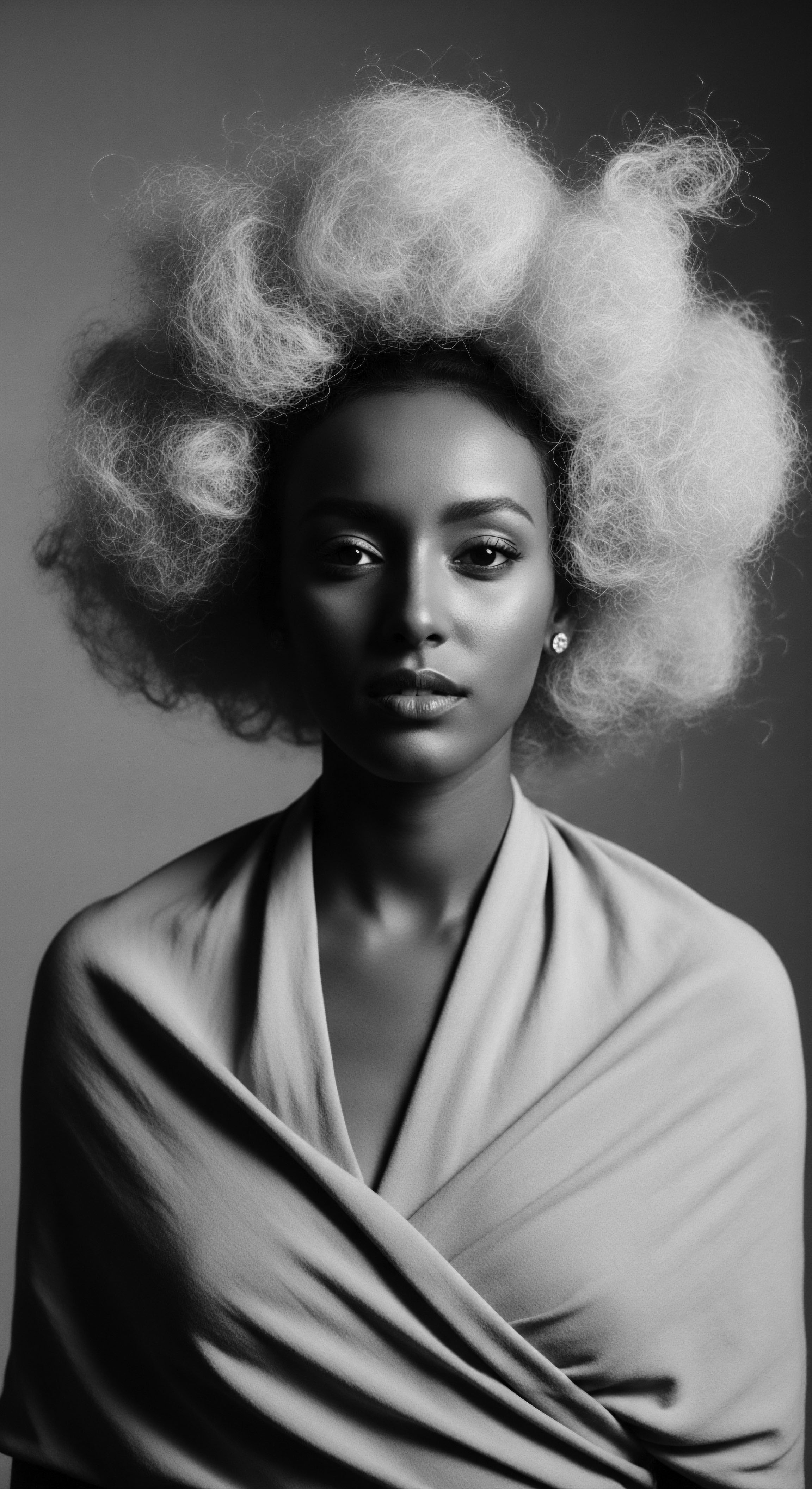
How Were Hair Regimens Holistic and Purposeful?
Ancient Egyptian hair care was not merely about aesthetic appeal; it was intrinsically linked to overall health, social standing, and spiritual beliefs. Their regimens were purposeful, addressing both practical needs and symbolic desires.
For instance, the desire to prevent baldness and graying is evident in surviving texts detailing remedies for these conditions. While the efficacy of some remedies might be debated, the intent speaks to a societal value placed on maintaining a youthful and vibrant appearance, tied to concepts of vitality and rebirth. The careful washing and scenting of hair, coupled with the application of oils, ensured cleanliness and a pleasing aroma, which were signs of self-respect and social grace.
Ancient Egyptian hair care, deeply practical and ritualistic, employed natural elements like oils, beeswax, and henna to nourish, style, and symbolize identity.
The ritualistic significance of hair extended even into the afterlife. Mummies were often buried with meticulously styled hair or wigs, sometimes coated with fatty substances, ensuring the deceased looked presentable for their journey into eternity. This practice speaks to a cultural understanding that the body, including the hair, retained importance beyond earthly existence. The deliberate care of hair, therefore, became a powerful act of preparing for an eternal existence.
The preservation of ancient Egyptian hair, sometimes with styling products still adhering to the strands, offers compelling evidence. A study analyzing hair samples from 18 mummies, some as old as 3,500 years, confirmed the application of fat-based products containing biological long-chain fatty acids. This research, published in the Journal of Archaeological Science, concluded that these were indeed styling products used in both life and death to maintain hairstyles. (McCreesh, Gize, & David, 2011) This scientific validation provides a tangible link between modern understanding and ancestral wisdom, demonstrating that the very chemistry of ancient treatments aligned with the needs of textured hair to retain its form and moisture.

What Does Hair Symbolism Mean for Our Heritage?
Hair in ancient Egypt served as a dynamic symbol of:
- Social Position ❉ Elaborate wigs and specific styles directly communicated wealth, profession, and status within a hierarchical society.
- Religious Devotion ❉ Certain hairstyles or the act of shaving could link individuals to deities or specific ritualistic practices, signifying purity and spiritual readiness.
- Mourning and Grief ❉ Hair was physically altered during periods of sorrow, such as the cutting of locks or throwing dust upon the head, directly associating it with emotional states.
- Power and Protection ❉ Hair could be perceived as a source of power, as seen in depictions of kings seizing enemies by their hair as a sign of domination. Children’s sidelocks offered magical protection.
These symbolic layers elevate ancient Egyptian hair practices from mere beauty routines to a profound reflection of their worldview. For textured hair heritage, this signifies that our hair has always held a deeper story, a language of identity and cultural continuity that resonates across time.
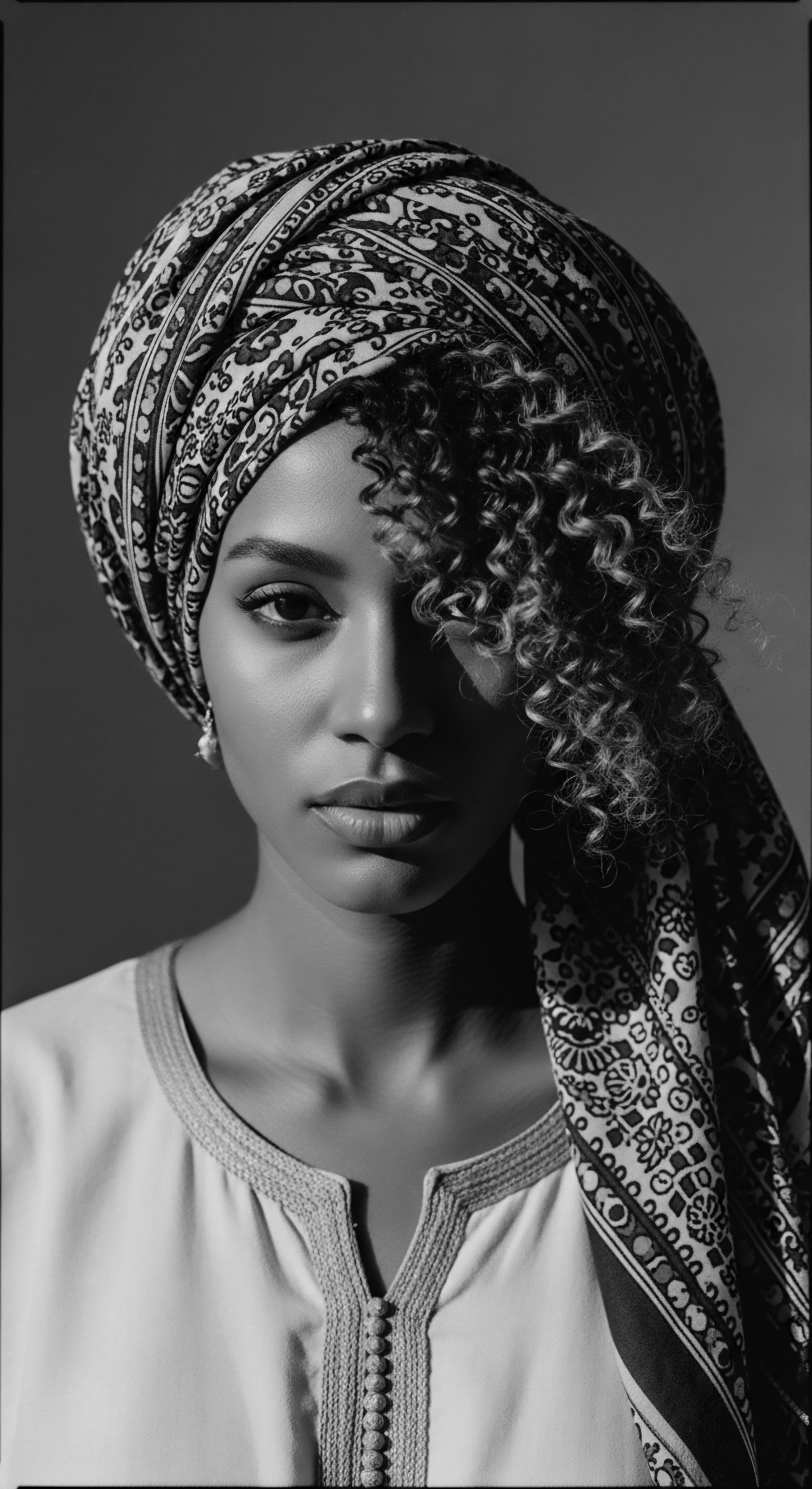
Reflection
As we close this chapter on the ancestral practices that shaped ancient Egyptian textured hair care, we find ourselves standing at a luminous crossroads. The echoes from the sun-baked sands of Kemet reverberate with profound relevance for our contemporary understanding of textured hair heritage. This journey through ancient rituals, botanical wisdom, and societal meanings reveals that the care of textured hair has always been a conversation with the self, with community, and with the unseen forces that guide our lives.
The ancient Egyptians, in their meticulous devotion to hair, sculpted not only strands but also cultural narratives. Their ingenuity with natural balms, their skill in crafting intricate wigs, and their understanding of hair’s symbolic weight laid foundational principles that continue to inform us today. The very act of tending to one’s coils and kinks, then as now, became a tender thread connecting daily life to something greater—a legacy of resilience, beauty, and ancestral wisdom that persists.
To consider these ancient practices is to acknowledge a continuous story of textured hair, one that resists erasure and instead calls for celebration. It asks us to look beyond fleeting trends and recognize the deep-seated wisdom in natural ingredients, the purpose behind protective styling, and the profound power embedded in our unique hair forms. Roothea’s ‘Soul of a Strand’ ethos finds its deep resonance in this ancient narrative, reminding us that each coil carries not merely genetic code, but also the memory of generations past, their practices, and their profound appreciation for the luminous life within every strand.

References
- McCreesh, N. C. Gize, A. P. & David, A. R. (2011). Ancient Egyptian Hair Gel ❉ New Insight into Ancient Egyptian Mummification Procedures through Chemical Analysis. Journal of Archaeological Science, 38(12), 3432–3434.
- Fletcher, J. (1998). The Hair of the Pharaohs ❉ An Archaeological Exploration of Ancient Egyptian Hairstyles and Wigs. British Museum Press.
- Fletcher, J. (2002). Ancient Egyptian hair and wigs. Ostracon Journal of Egyptian Study Society, 13, 2-8.
- Tassie, G. J. (2009). The Social and Ritual Contextualisation of Ancient Egyptian Hair and Hairstyles from the Protodynastic to the End of the Old Kingdom. UCL Discovery.
- Marshall, A. (2025). The magic and power of hair in ancient Egypt. The Past, Ancient Egypt Issue 147.
- Bos, H. (2014). Hairstyles and Hair care at Amarna ❉ An Analysis of the Hair of the Individuals in the Armana Cemetery. Journal of Archaeological Science.
- Valdesogo, M. R. (2018). Hair and Death in Ancient Egypt ❉ An Archeological Study. Aris & Phillips.
- Robins, G. (1996). Women in Ancient Egypt. British Museum Press.
- Meskell, L. (1999). Archaeologies of Social Life ❉ Age, Sex, Class Et Cetera in Ancient Egypt. Blackwell Publishers.
- David, R. (2008). Handbook to Life in Ancient Egypt. Facts On File.
